Key Takeaways
- New York City’s commercial real estate is facing unprecedented challenges, including high vacancy rates and economic downturn.
- Certain sectors like multifamily housing and neighborhood retail are showing resilience.
- The path to recovery is fraught with uncertainty, requiring innovation and adaptability.

State of New York City’s Commercial Real Estate in 2024
The Landscape of New York City’s Commercial Real Estate
As we venture into 2024, the commercial real estate market in New York City presents a landscape of recovery and transformation.
Emerging from the lows of the pandemic, the market is marked by a surge in activities, particularly in the restaurant and hospitality sectors, which are showing notable comebacks.
Restaurant Industry’s Revival: The restaurant industry in New York City is experiencing a resurgence. This sector’s recovery is highlighted by a significant drop in vacancy rates, which, as of early 2023, stood at a mere 2.4%, closely approaching the pre-pandemic average of 2%.
This improvement signifies the sector’s robust recovery, spurred by the revitalization of city life and the return of residents, tourists, and office workers to the city’s diverse culinary scene.
Hospitality Sector Exceeding Pre-Pandemic Levels: In addition to restaurants, the hospitality industry in New York City has also surpassed its pre-pandemic performance. Achieving over 111% of its previous group revenue, the sector reflects a strong rebound and growing confidence among operators and investors alike.
Emerging Trends and Evolving Dynamics
The commercial real estate market in New York City is not just about recovery; it’s also about evolution.
The way businesses and investors approach commercial spaces is transforming, influenced by the pandemic’s long-term effects and shifting economic trends.
Hybrid Work’s Impact on Office Spaces: The rise of hybrid work models has led to significant changes in the demand and utilization of office spaces.
While the traditional office is not obsolete, the requirement for physical office space has evolved, leading to creative repurposing and a reevaluation of space usage.
Shift Towards Multifunctional Spaces: There’s a growing trend towards converting traditional office spaces into multifunctional areas that cater to various needs, such as residential units, data centers, or community spaces.
This shift is driven by the changing nature of work and the increased focus on sustainability and community-centric developments.
Adaptation and Resilience: The real estate market in New York City is demonstrating adaptability and resilience in the face of these changing trends.
Stakeholders are increasingly focusing on innovative solutions to address the dynamic needs of the market, ensuring that commercial real estate continues to be a vital part of the city’s economic fabric.

Key Factors Influencing the Market in 2024
Impact of Interest Rate Cuts on Dealmaking and Refinancing
As we venture into 2024, the commercial real estate landscape in New York City is significantly influenced by monetary policy.
Interest rates, set by the Federal Reserve, play a pivotal role in the dynamics of dealmaking and refinancing in the real estate sector.
Prospects of Rate Cuts: The Federal Reserve’s projections suggest potential interest rate cuts from the current range of 5.25% to 5.5%, with markets anticipating these reductions as early as May.
These cuts could stimulate increased dealmaking activity and offer more favorable conditions for property owners seeking to refinance.
Lower interest rates typically reduce the cost of borrowing, making it more feasible for investors and developers to finance new projects or manage existing ones efficiently.
The Double-Edged Sword: However, there’s an element of uncertainty.
Some experts suggest that the cost of capital might worsen through 2024, adding a layer of complexity to these predictions.
Property owners and investors must navigate this uncertainty, balancing the potential benefits of lower rates against the risks of a volatile financial environment.
Overall Economic Conditions
The state of the broader economy has a direct impact on the commercial real estate market. As we look at 2024, several economic indicators are shaping the real estate landscape in New York City.
Recession Concerns: The possibility of a mild recession, seen as 65% likely by some analysts, looms over the market.
While the expected mild nature of this downturn offers some solace, it nevertheless poses challenges for real estate stakeholders.
Developers and investors must be prepared for tighter lending practices and potentially reduced revenues.
Expense Mitigation: In light of these economic conditions, real estate professionals are prioritizing expense mitigation, with many bracing for revenue hits at their lowest levels since 2018.
This trend underscores the need for strategic financial management and cost-effective operational practices in the commercial real estate sector.
Global Factors
International events and trends also have significant implications for New York City’s commercial real estate market.
Geopolitical Uncertainties: Conflicts in regions like Ukraine and the Middle East could create global market instabilities, indirectly affecting the real estate market in New York City.
These uncertainties can lead to fluctuations in foreign investment and shifts in global economic dynamics.
China’s Economic Recovery: The slower-than-expected economic recovery in Mainland China is another factor that could influence the NYC real estate market, given the interconnected nature of global economies.
Inflation and Energy Market: Persistent inflation and unpredictability in the energy market are adding complexities to operational costs and investment decisions in the real estate sector.
These factors could affect the affordability and feasibility of new developments and ongoing projects.

Sector-Specific Trends and Performance
Office Space: Ongoing Obstacles and Opportunities
The office sector in New York City’s commercial real estate market faces a unique set of challenges and potential opportunities in 2024.
High Vacancy Rates: The national office vacancy rate has risen, reaching 19.2% in the third quarter of 2023, approaching a historic peak. This increase is a reflection of the changing work environment, with a shift towards hybrid and remote work models reducing the demand for traditional office space.
Repurposing Office Spaces: While the traditional office concept is under pressure, it is not obsolete. There is an emerging trend to repurpose less desirable Class B and C offices into apartments, data centers, or other functional spaces, adapting to the evolving needs of urban centers.
Industrial and Retail Sectors: Signs of Softening and Success
Different sectors within commercial real estate are showing varied trends, each responding differently to the market conditions of 2024.
Industrial Sector: The industrial real estate sector, particularly cold-storage properties, continues to perform well. However, there are signs of softening in demand as post-pandemic inventory needs decrease. Despite this, long-term prospects remain positive with consistent growth expected in warehouse and distribution properties.
Retail Resilience: Retail, especially neighborhood shopping centers in densely populated urban and suburban areas, is expected to perform steadily. While e-commerce growth continues, the physical retail sector, excluding Class B and C malls, is poised for moderate growth and stable vacancy rates.
Multifamily Properties: A Steady Performer
The multifamily sector in New York City continues to demonstrate strength in the face of economic headwinds.
Sustained Demand: Despite a slowdown in rent growth, multifamily properties maintain a low vacancy rate of around 5% through 2023. High interest rates, which are likely to keep mortgage rates elevated, continue to support the demand for multifamily properties as would-be homebuyers are priced out of the market.

Challenges and Opportunities
Rising Operational Costs
The commercial real estate market in New York City in 2024 grapples with escalating operational costs, posing significant challenges for developers and property owners.
Increased Construction and Insurance Costs: The rising costs of construction materials and insurance premiums are a substantial concern. These increased expenses are driven by broader economic trends such as inflation and supply chain issues, impacting the feasibility of new developments and renovations, as well as the overall operational budgets of existing properties.
Environmental, Social, and Governance (ESG) Compliance
ESG compliance emerges as both a challenge and an opportunity in the commercial real estate sector.
Striving for Sustainability: Companies in the real estate industry are increasingly required to align with stricter ESG standards.
This shift towards sustainability and responsible business practices demands significant adjustments in operations, posing challenges for firms unprepared for these regulations. However, it also opens avenues for innovation and leadership in sustainable practices.
Technology and Infrastructure Modernization
Technology plays a pivotal role in the evolution of the commercial real estate industry, presenting both challenges and opportunities.
Upgrading Legacy Systems: As the industry evolves, there is a pressing need to integrate modern technology solutions to enhance efficiency and operations.
The challenge lies in replacing or upgrading deeply entrenched legacy systems, which requires substantial investment but is crucial for staying competitive and meeting changing stakeholder needs.

Shadows of Despair Over New York City’s Commercial Real Estate in 2024: A Tale of True Uncertainty
As we look a little deeper into the state of New York City’s commercial real estate market in 2024, a somber narrative unfolds, marked by despair and dread.
The industry faces unprecedented challenges that cast a long shadow of uncertainty over its future recovery.
The Looming Threat of Economic Downturn
The commercial real estate sector in New York City is grappling with the harsh realities of an economic slowdown.
The fading stimulus support, combined with weakening residential home sales and under-budgeted costs, has created significant budget gaps, posing a dire threat to the stability and growth of the market.
This challenging economic climate exacerbates the industry’s struggles, raising doubts about the possibility of a full recovery.
The Plight of Vacant Office Spaces
One of the most striking manifestations of despair in New York’s real estate landscape is the alarming vacancy rates in office spaces.
Companies continue to shed office space, leading to record-high vacancy rates. As of the end of 2023, the commercial real estate office sector in the U.S. faced a staggering vacancy rate of 13.6%, with 209 million square feet of sublease space available.
This trend paints a grim picture of deserted office towers and abandoned workspaces, symbolizing the industry’s deep-seated woes.
The Burden of Rising Costs and Labor Shortages
Adding to the industry’s troubles are the rising costs and labor shortages that paint a pessimistic outlook for 2024.
New York contractors and developers are facing mounting challenges, including escalating construction costs and a scarcity of skilled labor.
These factors not only hinder new developments but also put existing projects at risk, contributing to the sense of despair enveloping the sector.
The Uncertain Path to Recovery
Amidst these challenges, the path to recovery for New York City’s commercial real estate market remains fraught with uncertainty.
The industry stands at a crossroads, with the potential for either a gradual rebound or a continued downward spiral.
Stakeholders are left to navigate this unpredictable landscape, hoping for a resurgence but preparing for the worst.

Assessment
It’s evident that the sector stands at a pivotal, albeit uncertain, crossroads.
The year has unfolded as a complex tapestry of challenges and subdued hopes, with each thread revealing the intricate interplay of economic, social, and technological forces shaping this dynamic market.
Reflecting on a Year of Unprecedented Challenges
The commercial real estate market in New York City has been a mirror reflecting the broader economic and societal shifts of our time.
The lingering effects of the pandemic, coupled with economic headwinds, have reshaped the very fabric of this once-thriving market.
High vacancy rates in office spaces, the struggle to adapt to changing work models, and the economic pressures of rising costs and labor shortages have cast a long shadow over the industry.
Resilience Amidst Desolation
Yet, in the face of these daunting challenges, there lies a story of resilience and adaptation.
Stakeholders in the market have shown an unwavering spirit to navigate these turbulent times, seeking innovative solutions and redefining their strategies to stay afloat.
The sectors that have managed to hold strong, like multifamily housing and neighborhood retail, offer a glimmer of hope and a roadmap for navigating the uncertain terrain.
The Path Forward: A Blend of Caution and Optimism
Looking ahead, the path to recovery for New York City’s commercial real estate market is not straightforward. It requires a delicate balance of caution and optimism, a readiness to adapt to ever-changing market dynamics, and an openness to embracing new opportunities.
The future may hold further challenges, but it also presents the potential for growth and transformation.
A Testament to the City’s Enduring Spirit
The state of the commercial real estate market in 2024 is, in many ways, a testament to the enduring spirit of New York City. A city known for its resilience and dynamism, New York continues to navigate through these trying times, much like it has through countless challenges in the past.
The commercial real estate market, at its core, remains a vital part of the city’s economic and cultural identity, poised to evolve and thrive in the years to come.
No related posts.




























